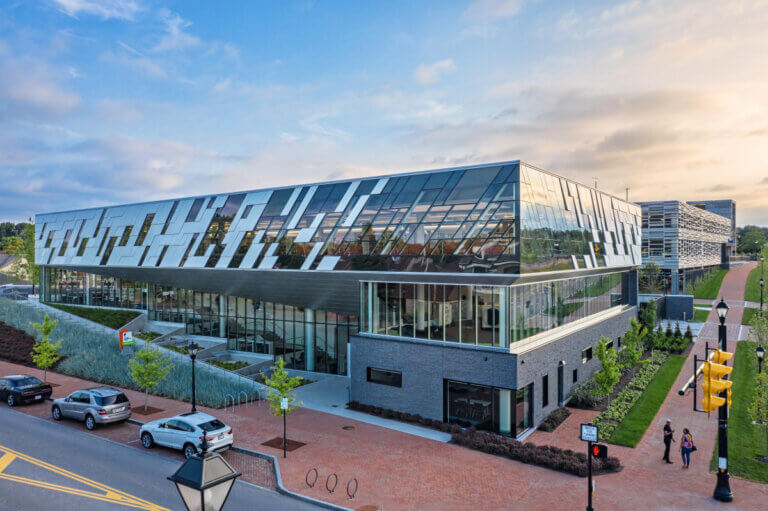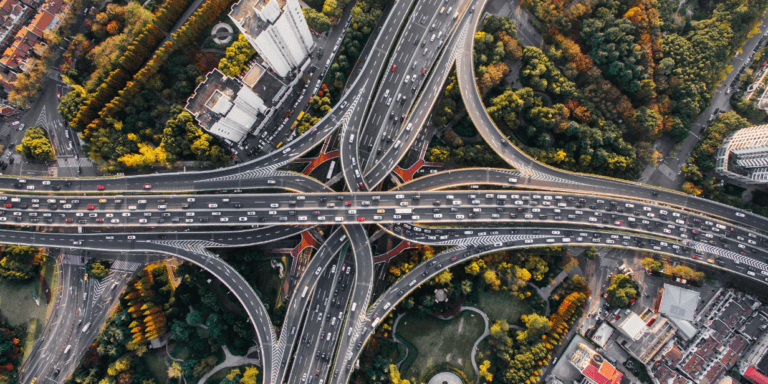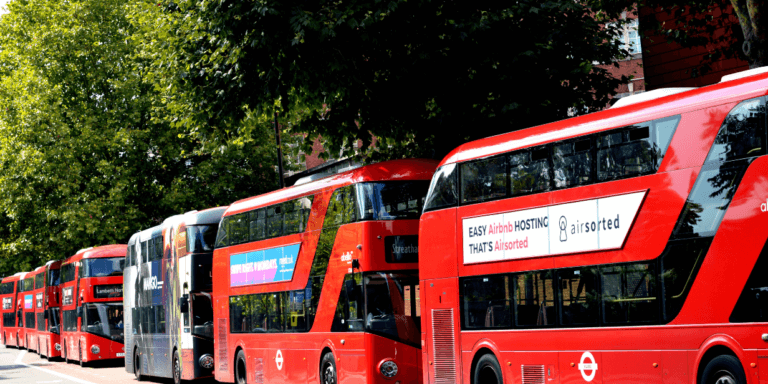Why You Need USDOT OCR
How much time do you lose out of your day when you have to deal with inaccurate data or slow response time tracking commercial vehicles? The stakes are high and mistakes can happen at several stages of the process.
When they do, you waste time and manpower sorting out issues. Bad or missing data can also lead to safety risks, more wear and tear on roads and infrastructure, lost revenue, increased liability, reputation smears and financial disputes. Nobody wants that, but it happens because getting accurate information can be tricky.
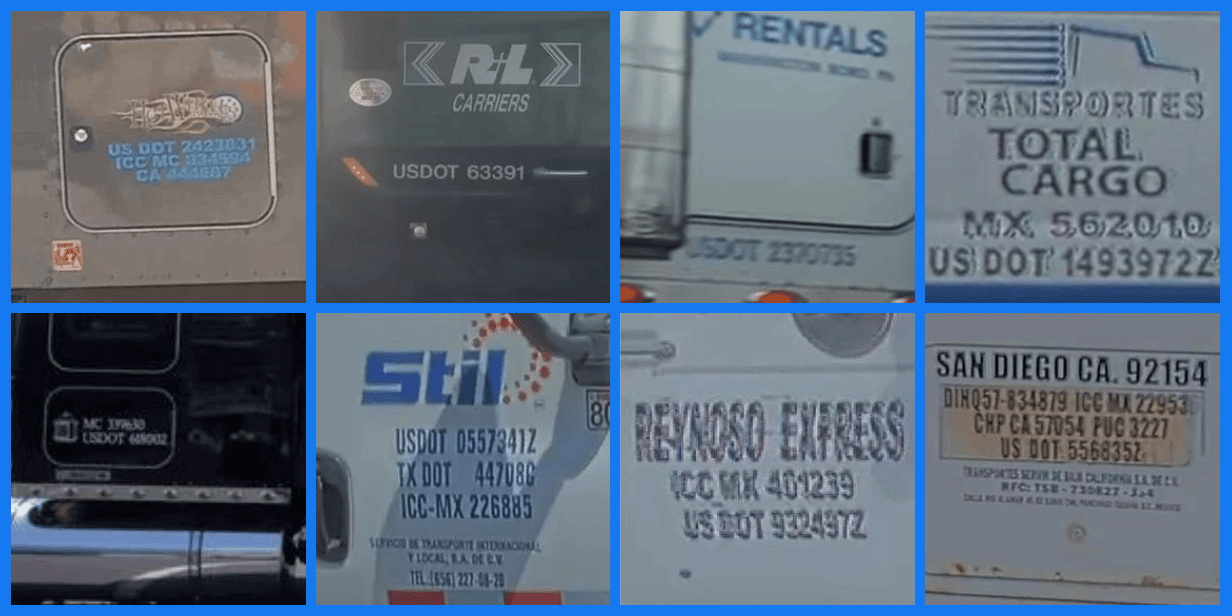
USDOT Numbers. Source: Plate Recognizer
OCR Software for USDOT Recognition
Commercial carriers fall under federal USDOT number display regulations, but a lot of them also have additional text on their vehicles. That alone makes it hard to accurately capture numbers, but our software excels at it. Our USDOT OCR automates the process of reading and interpreting license plate data to improve safety, compliance and data collection for commercial vehicles.
Our advanced technology and features can help overcome the challenges of USDOT recognition like variability in display and accuracy issues because of different font types and styles. We also built in optimization techniques to improve recognition in different environmental conditions so you can trust you’re getting the most accurate and reliable data.
In this article, we’ll explore the challenges and benefits of using OCR for USDOT recognition and how Plate Recognizer’s software can help you maximize perks and overcome difficulties. We’ll also provide guidance on identifying the right technology so you can make the best decision for your organization’s needs.
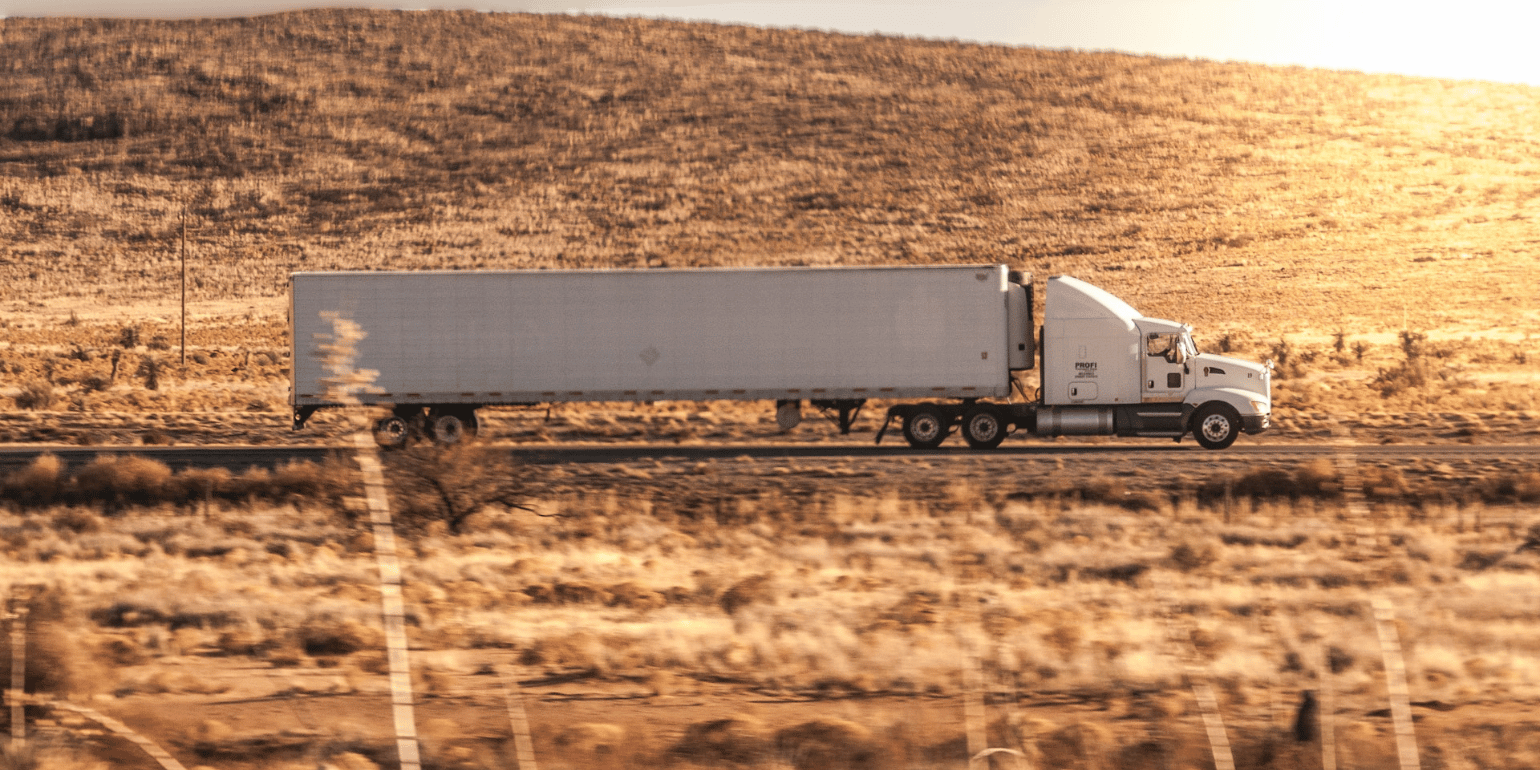
18-wheeler on a desert road. Source: Unsplash
Commercial Vehicle Statistics
The more types and variations of something there are, the harder it can be to track. Before we get to the need for and benefits of USDOT OCR, check out these numbers.
- There are 284 million vehicles in operation throughout the United States.
- Of those, 12.5 million are large commercial trucks and buses.
- Commercial vehicles log more than 300 billion vehicle miles in a year.
- Revenue estimates from the trucking industry are around 255.5 billion.
- 5.4 million commercial vehicles operate across state lines and another 3.5 million stay within the boundaries of their state. Some are private carriers, others are for hire, and still, others do both. Each group potentially falls under different regulations.
That’s a lot of vehicles, a lot of merchandise in flux and a lot of money at risk.
And we’re not just talking about big rigs. Certainly, 18-wheelers are a big piece of the pie, but other vehicle types may also be required to display a USDOT number. These include vehicles used to transport passengers like buses and shuttles, vehicles moving hazardous materials, some construction and maintenance vehicles, vehicles used for delivery and transportation and emergency response vehicles, to name a few.

Ambulance with multiple text inputs. Source: Pixabay
What are USDOT numbers?
If your role has anything to do with transportation you already know that USDOT numbers are unique identification numbers issued by the United States Department of Transportation (USDOT) to commercial motor vehicles (CMVs) that travel across state lines. These numbers are used to track and monitor the safety and compliance of CMVs as part of the USDOT’s National Highway Traffic Safety Administration (NHTSA) program.
Types of Vehicles Required to Display USDOT Numbers
So, what types of vehicles are required to display USDOT numbers? Regulations mandate these numbers for commercial motor vehicles like trucks, buses, and trailers that have a gross vehicle weight rating (GVWR) of over 10,000 pounds and transport passengers or hazardous materials across state lines. It’s also good to know that some states require USDOT numbers for intrastate transport as well.
In order to get a USDOT number, commercial vehicle operators are required to register with the Federal Motor Carrier Safety Administration (FMCSA) and comply with safety regulations like regular vehicle inspections, driver qualifications, and hours of service limits.

Traffic jam with commercial and private vehicles. Source: Pexels
Why USDOT Numbers are Required
If it seems like a lot of red tape, acronyms and headaches, that’s because like a lot of regulations, it can be. USDOT numbers are used for a variety of purposes related to commercial vehicle safety and regulation in the United States. Here are some of the ways they are commonly used:
- Compliance monitoring: USDOT numbers are used to track compliance with safety regulations and ensure that commercial vehicles are properly registered and maintained. State and federal agencies can use these numbers to identify and inspect vehicles that may pose a safety risk to the public.
- Accident reporting: In 2020, 4,998 large trucks and buses were involved in fatal crashes and many, many more had accidents that didn’t lead to fatalities. In the event of an accident involving a commercial vehicle, the USDOT number can be used to identify the carrier and determine its safety record quickly. This information can be used to investigate accidents and determine liability.
- Transportation planning: USDOT numbers can be used to collect data on commercial vehicle traffic and infrastructure usage. Officials can then use this information to plan and improve transportation networks and to identify areas where additional safety measures may be needed.
- Weight enforcement: Many states have weight restrictions for commercial vehicles. USDOT numbers can be used to track compliance with these regulations. Overweight vehicles can cause damage to roads and bridges, so tracking compliance is an important part of ensuring the safety and longevity of transportation infrastructure.
Overall, USDOT numbers are necessary because of the critical role they play in ensuring safety and efficiency for commercial transportation within the United States. So now that we’ve covered why they matter, let’s talk about the technology that can make accurately capturing them easier – Plate Recognizer’s USDOT OCR.
What is OCR?
Optical Character Recognition (OCR) is a technology that enables computers to read and understand printed or handwritten text just like a human would. OCR works by analyzing the shapes of individual characters in the text and matching them to a database of known character shapes. The software can recognize letters, numbers, and other symbols. It can even distinguish between different fonts and styles. It’s an easy way to digitize text so it’s simpler to work with.
For example, let’s say you find a box of index cards containing your great-grandmother’s recipes, and you want to make a digital copy to preserve the information and make it easy to share with your family members. You might use OCR software on your phone to scan each card and turn the handwritten recipes into digital data that are easy to edit and search. Technology helps you safeguard important information and makes accessing and using it more convenient.
OCR technology is used in a variety of applications, from digitizing documents to shipping container OCR to recognizing license plates on cars. It can help save time and improve accuracy in tasks that involve large amounts of text.
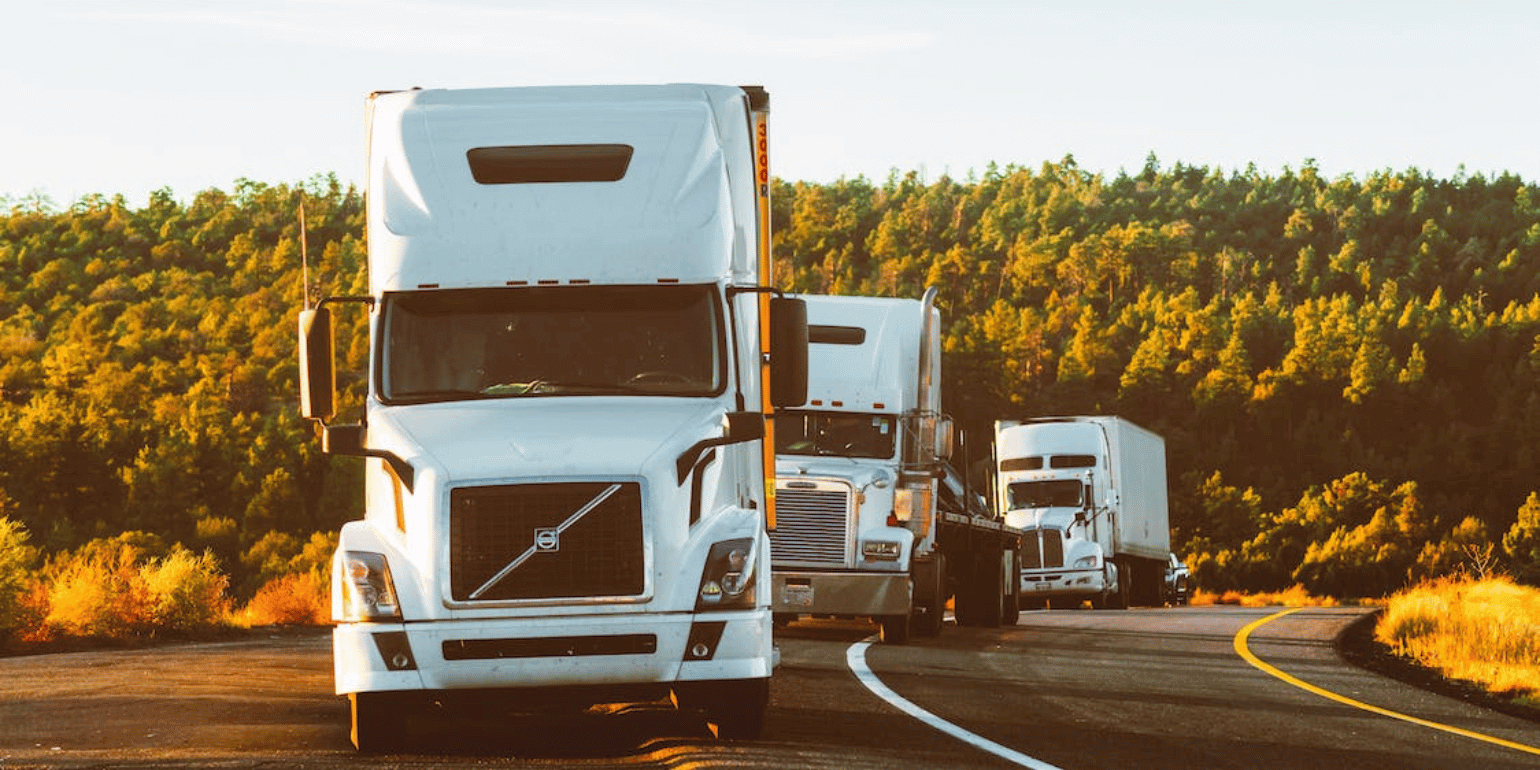
Semi trucks on side of road. Source: Pexels
Benefits of USDOT Recognition in OCRs
Technology that monitors traffic is often in the news because its use is so widespread. Organizations in the transportation and logistics industry use it because OCR software with USDOT recognition capabilities can provide benefits like these.
Improved safety and Compliance Monitoring for Commercial Vehicles
By using OCR software to recognize USDOT numbers on commercial vehicles, organizations can better monitor compliance with safety regulations and quickly address potential safety risks. For example, law enforcement agencies can use OCR technology to scan USDOT numbers and identify carriers that have been cited for safety violations in the past. When they’re caught breaking the rules again, having a record justifies maximum fines and penalties. Identifying drivers with a history of dangerous behavior makes the roads safer for everyone.
Enhanced Data Collection and Analysis for Transportation Planning and Infrastructure Improvement
State, city and county officials are often tasked with figuring out which roads, highways and bridges are most in need of maintenance, improvement or expansion. The ones that get the most use wear out fastest, but it can be hard to analyze traffic patterns on a large scale.
Sound, insightful decision-making gets easier when stakeholders use OCR software with USDOT recognition to collect data on commercial vehicle traffic and infrastructure usage. They can then use that data to preserve busy roadways and get the most out of limited budgets. For example, state departments of transportation can use OCR data to pinpoint high-traffic areas and make targeted infrastructure improvements to reduce congestion and improve safety.

Accident involving a commercial vehicle. Source: Unsplash
Fast, Accurate Data For Accidents/Traffic Incidents
When an accident happens that involves a commercial vehicle, there are almost always legal implications. Investigators, insurance agencies, drivers and commercial transportation organizations can use USDOT OCR to quickly and accurately identify the carrier involved, then use that information to paint a clear picture of what happened and determine liability.
For example, let’s say a commercial vehicle is involved in an accident and the driver wants to avoid responsibility, so he or she leaves the scene. Authorities can use USDOT OCR to identify the carrier by their number, track them down and bring them to justice.
Weight Restrictions and Other Regulation Monitoring
Commercial vehicle drivers are supposed to adhere to weight restrictions and other regulations, but they don’t always. Those regulations exist to protect infrastructure and decrease accident risk.
Overweight vehicles damage roads, bridges and other infrastructure. That costs cities, counties and states in terms of repairs and maintenance.
Heavy trucks are harder to stop. That means more accidents, leading to property damage and sometimes even injuries and fatalities.
There’s also an environmental impact. Overweight vehicles require more fuel to move their loads. Damaged roads make all the vehicles that travel them burn more gas. Fuel efficiency goes down across the board. By using OCR technology to monitor compliance, organizations can identify and address violations more quickly and effectively, reducing the risk of damage and improving overall safety on the roads.
Who Needs USDOT OCR?
Could your organization benefit from this type of technology? If you need to monitor or manage commercial traffic on the nation’s roadways, the answer is yes.
Several entity types currently use OCR systems that can recognize USDOT characters including:
- Law enforcement agencies: Local, state, and federal law enforcement agencies may use OCR systems with USDOT recognition to monitor commercial vehicle traffic, enforce weight restrictions, and track down vehicles involved in accidents or other incidents.
- Transportation agencies: State departments of transportation (DOTs) and other transportation agencies may use OCR systems with USDOT recognition to collect data on commercial vehicle traffic patterns, enforce regulations such as weight limits, and identify areas where infrastructure improvements may be needed.
- Commercial carriers: Commercial carriers such as trucking companies may use OCR systems with USDOT recognition to track their own vehicles and monitor compliance with federal regulations such as hours of service and vehicle maintenance.
- Insurance companies: Insurance companies may use OCR systems with USDOT recognition to investigate accidents involving commercial vehicles and determine liability.
- Border control agencies: Border control agencies may use OCR systems with USDOT recognition to monitor commercial vehicle traffic at border crossings. This is helpful both in identifying drivers that violate regulations and in reducing traffic congestion.
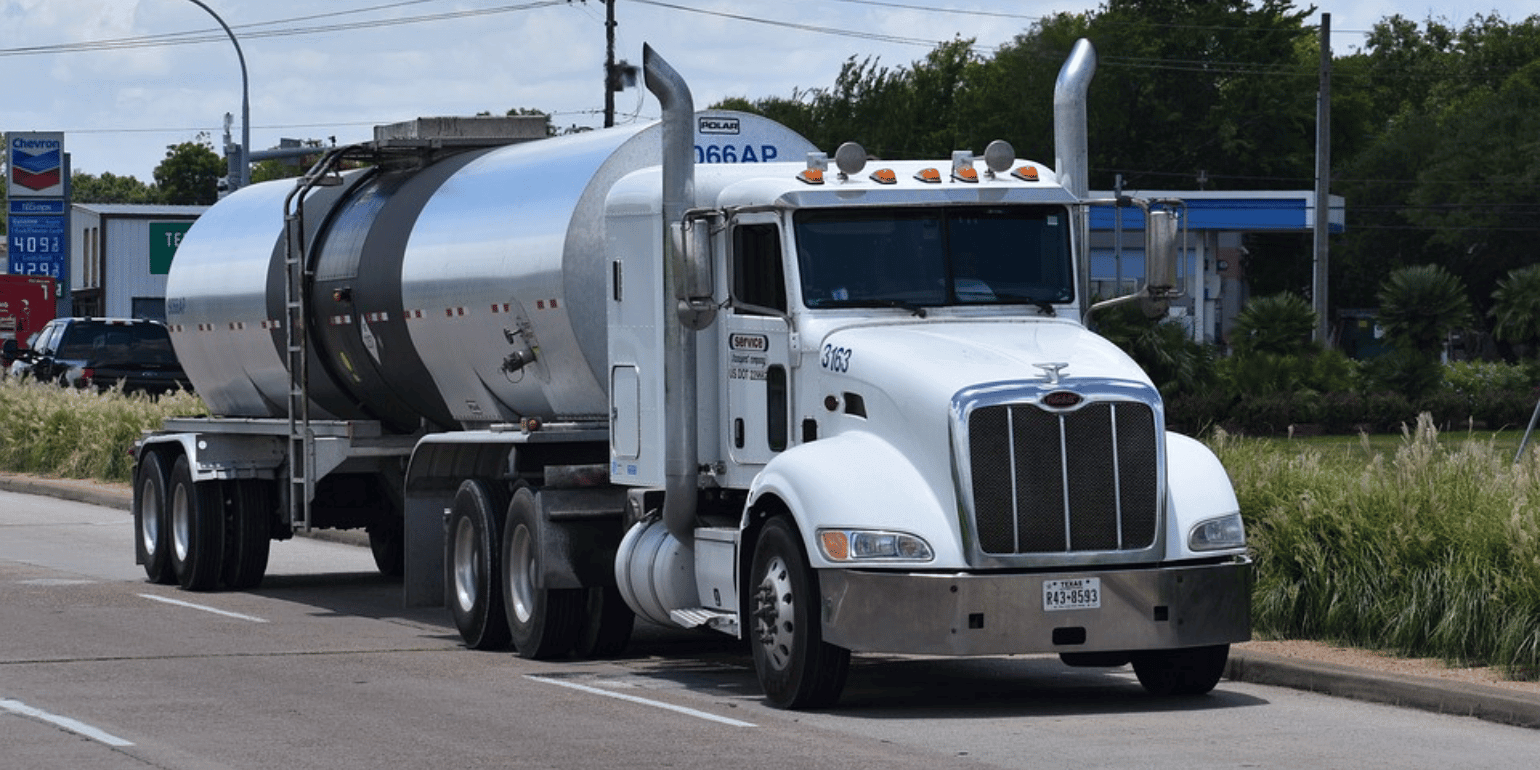
Tanker truck captured at an angle. Source: Pixabay
Why USDOT Recognition is Tricky for OCRs
Let’s talk about the elephant on the road – not all OCRs are up to the task of USDOT recognition. The process of identifying and making use of characters is much more difficult than simply recording a video or snapping a photo.
For starters, there are a ton of variables. Owner-operators and commercial carriers have a lot of leeway in how they can choose to format and display numbers. That means differences in font style, size, and color, plus changes in the number of characters used in the USDOT number. When OCR software runs into variations, sometimes it generates inaccurate readings and incorrect data.
That’s where technology can create more problems than it solves. For instance, if the font used on a commercial vehicle’s license plate has characters that are too close together or too similar in appearance, the OCR software may read the number incorrectly. This can trigger problems like inaccurate record generation, difficulties in vehicle tracking and even compliance issues if the vehicle is incorrectly identified.
Nobody wants to be the driver who gets blamed for something he/she didn’t do. It’s even worse when the person who did break the law gets away with it due to a technology glitch.
Low light conditions and high speeds also create a challenge. Sometimes it’s hard for OCR software to capture a clear image and accurately decode what’s there. If it’s dark or stormy, or a vehicle is traveling at high speed, the software may report the wrong information or fail to capture any data at all.
Another huge issue is the amount of text on commercial vehicles. Think of the last time you saw a plumber’s van or EMS vehicle. In both cases, there was probably a large amount of text scattered all over the unit. If OCR software thinks the hospital name or plumber company’s slogan is the USDOT number, you get bad data.
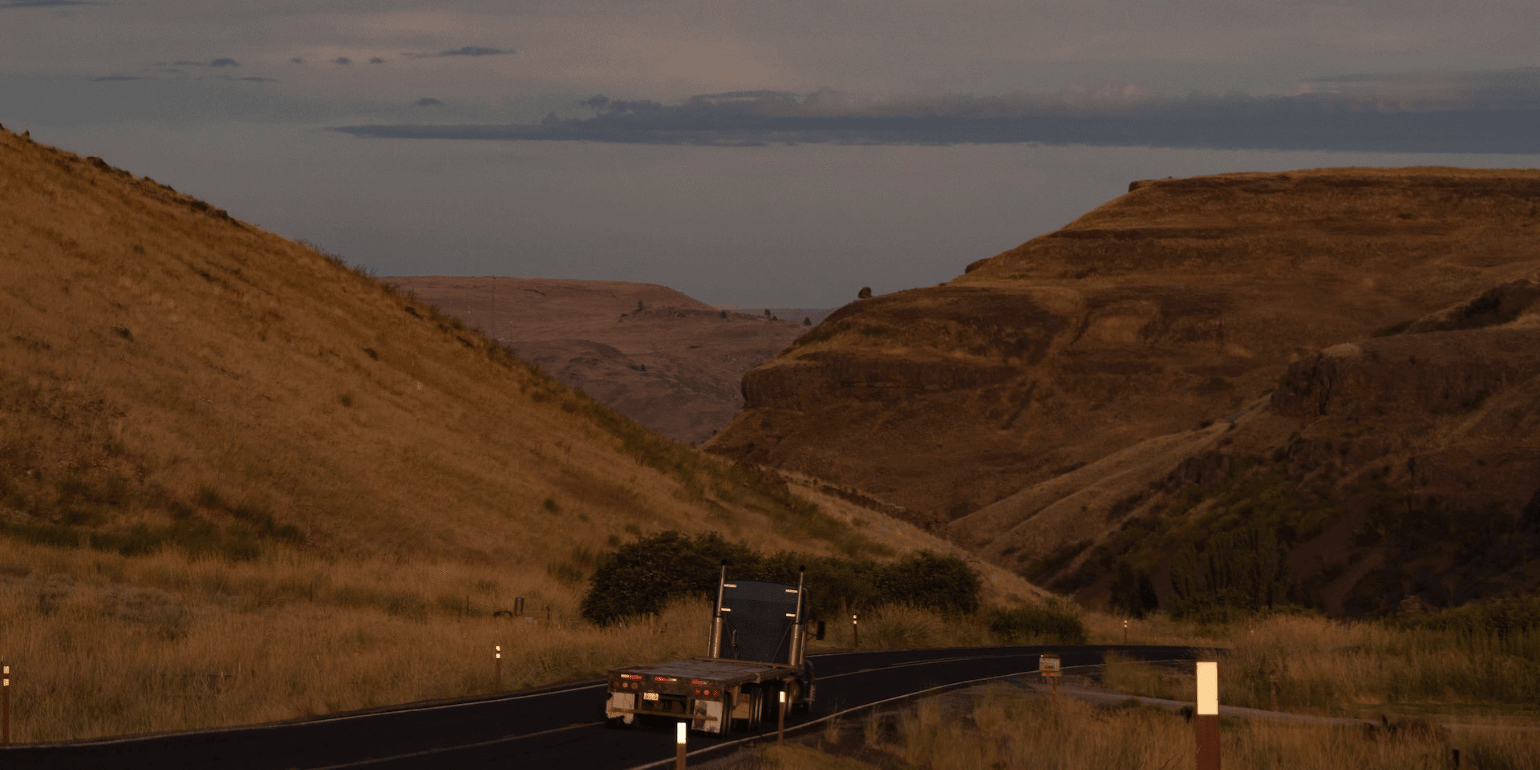
Big rig captured at dusk. Source: Unsplash
How Plate Recognizer Solves USDOT OCR Challenges
Our goal is to provide the best USDOT OCR possible. Plate Recognizer’s software does the following:
- Low light adjustments: Our software can automatically adjust for exposure and brightness challenges to optimize image quality and improve OCR accuracy. In other words, our software works even in bad weather and low-light conditions.
- Image stabilization: Plate Recognizer’s software uses advanced image stabilization techniques to ensure that USDOT number images are clear and crisp, even when they’re captured at high speeds.
- Angle adjustments: Our software can detect and correct for angled vehicles. That way even if a vehicle races by at an angle, you still get accurate data.
- Noise reduction: By applying advanced noise reduction algorithms, our OCR can filter out any random variations in brightness and color or interference from other alphanumeric characters, improving accuracy and reducing false positives.
- Character segmentation: Our software uses advanced character segmentation algorithms to accurately identify individual characters on a license plate, even in cases where characters are touching or overlapping.
Plate Recognizer’s OCR software can achieve higher levels of accuracy and reliability in USDOT recognition, even in challenging conditions. That means you get fast, accurate data effortlessly and around the clock.
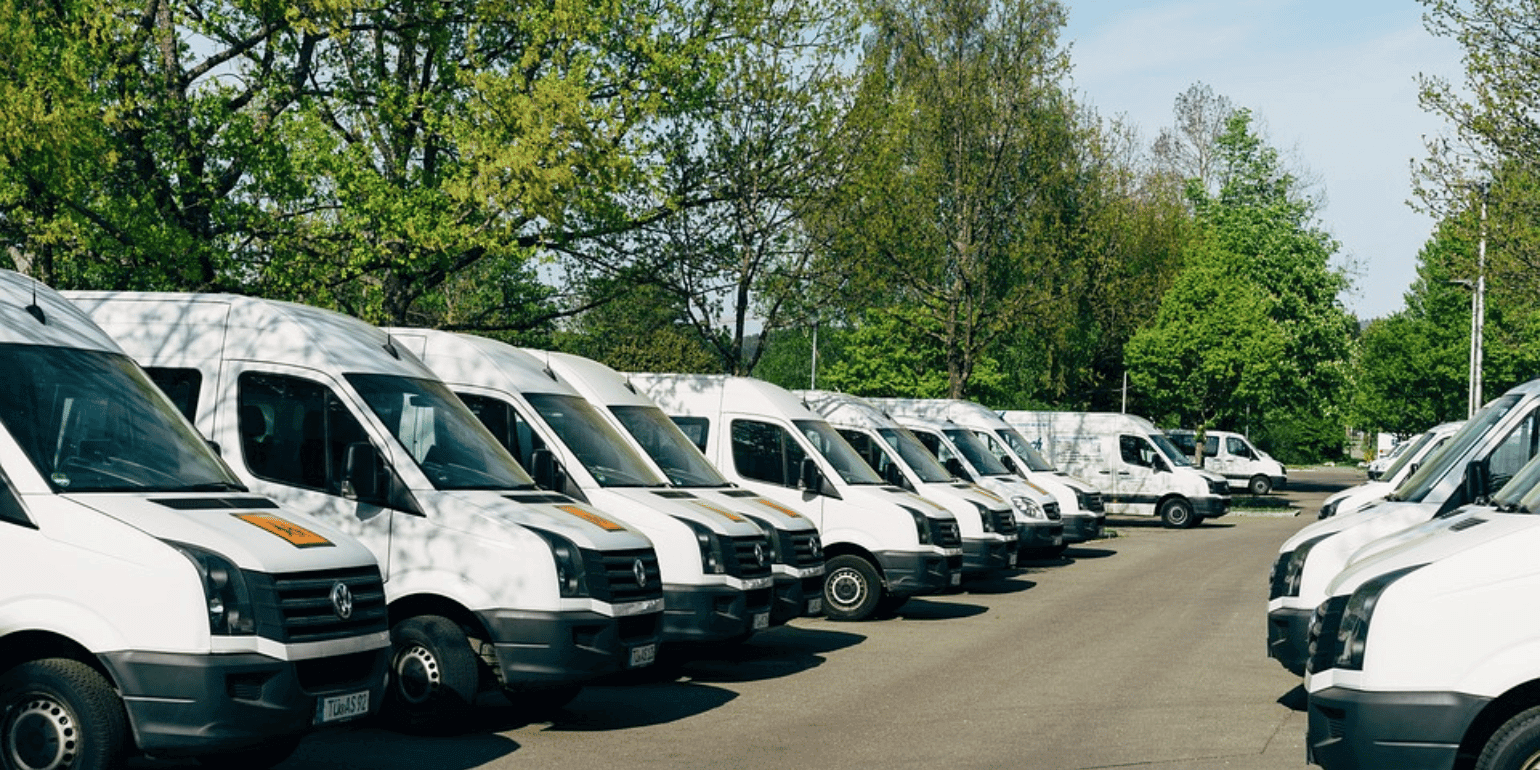
Commercial fleet vehicles. Source: Pixabay
Test Drive Plate Recognizer’s USDOT OCR for Free
Because we understand that every organization is unique, Plate Recognizer offers customizable solutions that can be tailored to your specific needs. Whether you need software for commercial vehicle monitoring, license plate recognition for your parking facility or apartment complex or other applications, our team can help.
We’ll even let you test drive our USDOT OCR software for free. Sign up for an account today or contact us to learn how we can help your organization improve its commercial vehicle monitoring and enforcement capabilities.
